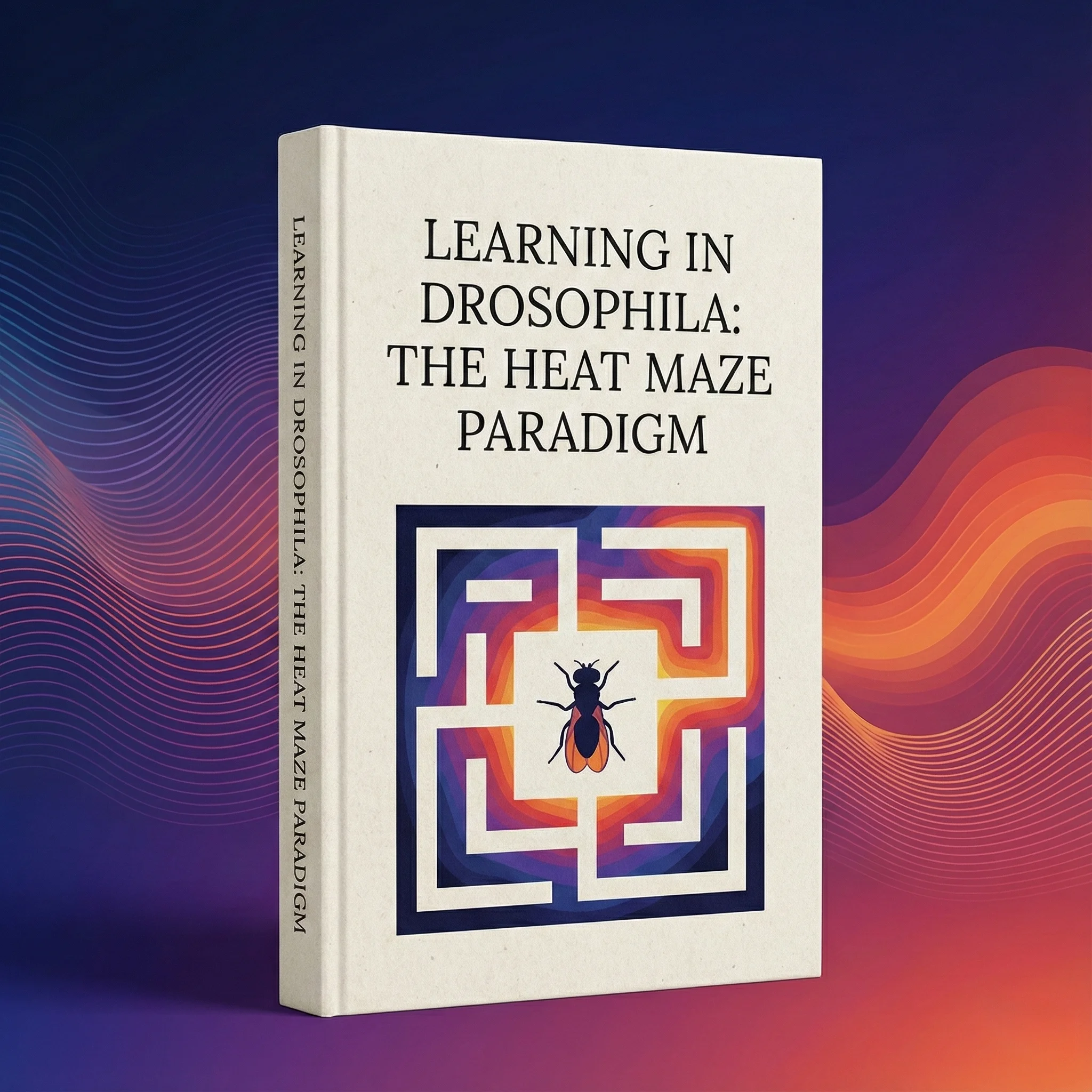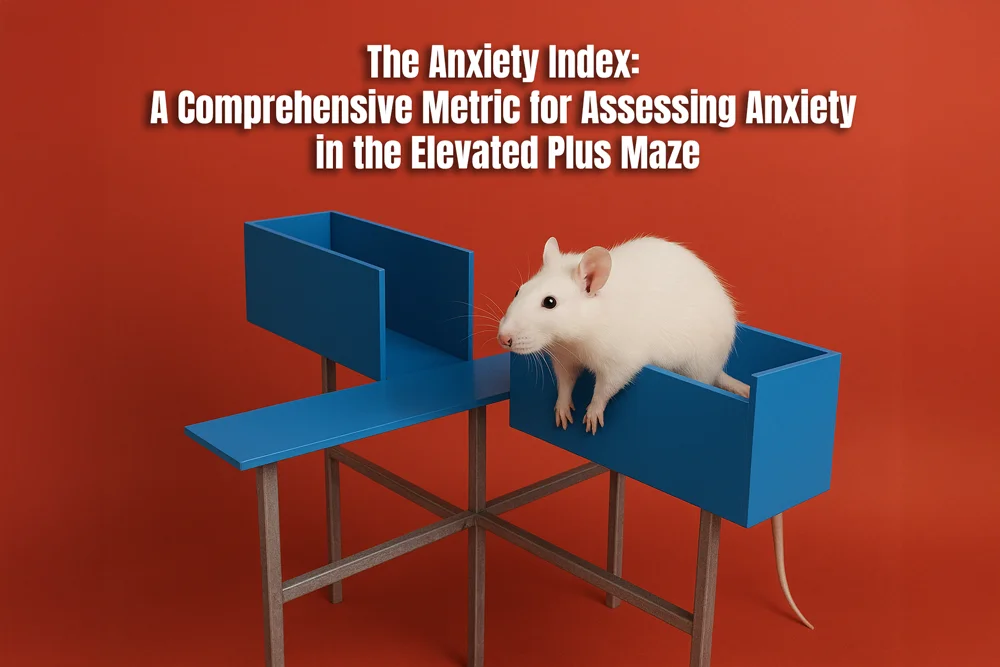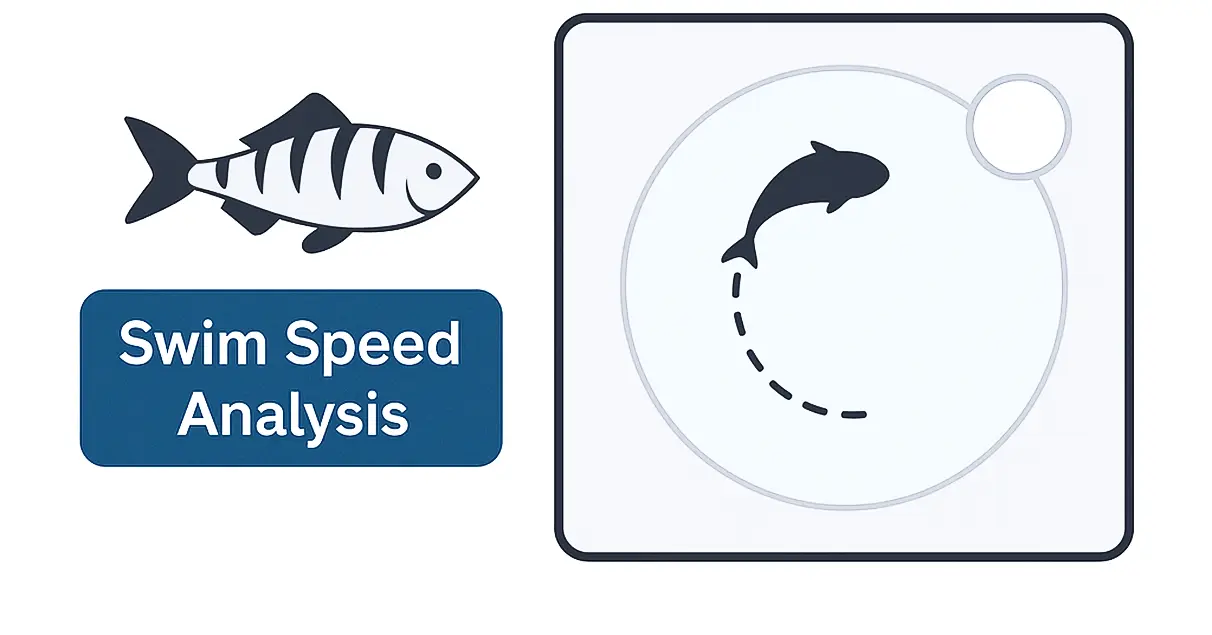

In the world of behavioral neuroscience, the Elevated Plus Maze (EPM) has earned its place as one of the most widely used paradigms for studying anxiety in rodents. While individual measures like time spent in open arms or number of open-arm entries provide valuable insights into anxiety-like behaviors, many researchers seek a more holistic approach. This is where the Anxiety Index comes into play—a composite metric that combines these measures to offer a richer, more nuanced understanding of rodent behavior.
In this article, we delve into the Anxiety Index, exploring its significance, how it works, and why it provides a superior approach to evaluating anxiety-like behavior in rodents. This comprehensive metric can not only enhance our interpretation of behavioral data but also support more refined conclusions, particularly in research areas like pharmacology, genetics, and environmental factors.
The Anxiety Index is a composite measure that integrates two of the most commonly observed behavioral indicators in the Elevated Plus Maze:
The core of the Anxiety Index is the ratio between these two factors, and it reflects the animal’s willingness to explore and comfort level when facing perceived danger. Rodents naturally avoid open, elevated spaces due to their vulnerability to predation. By combining both the time spent in open arms and the number of entries into the open arms, the Anxiety Index offers a more comprehensive measure of the rodent’s anxiety-like behaviors, helping researchers interpret the results with greater precision.
The Anxiety Index does not merely combine these two factors but often uses a weighted formula to account for the relative importance of each metric based on the study’s needs. This flexibility ensures that the Anxiety Index remains adaptable across various research contexts.
Time spent in the open arms is one of the most straightforward measures of anxiety in the EPM. It is based on the observation that rodents generally avoid open, unprotected spaces due to their natural instincts to seek safety. More time spent in the open arms generally suggests that the animal is less anxious, more exploratory, and more willing to confront potential risks. Conversely, less time in open arms indicates higher levels of anxiety, as the animal demonstrates avoidance behaviors by staying in the closed arms of the maze.
While this measure is valuable, it only provides one aspect of anxiety-related behavior—an animal’s emotional response to a potentially dangerous environment.
In addition to time spent in the open arms, the number of entries into these arms offers an additional layer of insight. Frequent entries into the open arms suggest a high level of exploratory behavior and low anxiety, as the animal is willing to venture into the more vulnerable space. On the other hand, fewer entries may reflect a more cautious or anxious animal that avoids the open arms, preferring the security of the enclosed arms.
This metric provides a dynamic view of decision-making under risk, making it an important behavioral indicator.
The individual metrics of time spent in open arms and number of entries into open arms are both informative on their own but can be limited when interpreted in isolation. For instance:
The Anxiety Index accounts for potential confounders such as locomotor activity, which can influence the interpretation of individual metrics. By combining both time and entries into one index, researchers can isolate anxiety from other behaviors, ensuring that the results are a more accurate reflection of the animal’s anxiety state.
The Anxiety Index provides a more comprehensive view of an animal’s anxiety response than traditional single-metric assessments. It integrates two complementary aspects of behavior: emotional response (time) and decision-making (entries). This gives researchers more insights into how an animal is reacting to the perceived threat posed by the open arms, which can vary depending on the situation and experimental condition.
One of the significant advantages of the Anxiety Index is its ability to detect the effects of both anxiolytic (anxiety-reducing) and anxiogenic (anxiety-inducing) agents. Anxiolytic drugs like benzodiazepines tend to increase both the time spent in the open arms and the number of entries into the open arms. Conversely, anxiogenic compounds or stressors typically reduce both of these measures, reflecting increased avoidance behavior.
This makes the Anxiety Index an ideal metric for pharmacological testing, where changes in anxiety levels are the primary concern.
Because it combines multiple metrics, the Anxiety Index can be applied across various rodent species and genetic backgrounds. While individual metrics like time in open arms may differ between species or strains, the composite nature of the Anxiety Index allows for cross-species comparisons while minimizing strain-specific biases.
The Anxiety Index can detect subtle changes in anxiety levels that might not be apparent in individual metrics. For example, an animal that shows slight reductions in both time and entries may exhibit a small but significant shift in anxiety that could be missed by analyzing only one metric. This makes the Anxiety Index a sensitive tool for capturing more nuanced behavioral shifts, which is essential for understanding complex changes in anxiety.
To ensure that the Anxiety Index provides reliable and valid data, researchers should take several methodological considerations into account:
Testing duration typically lasts between 5 to 10 minutes, depending on the study’s aims. Shorter sessions may fail to provide enough time for the rodent to exhibit stable behaviors, while longer sessions could lead to habituation, where the animal becomes accustomed to the maze and reduces its exploratory behavior over time.
Since the Anxiety Index combines both time and entries, it is essential to measure overall locomotor activity to ensure that the results are not confounded by differences in movement. Animals with reduced locomotor activity may show low entries and time in the open arms, which could be mistakenly interpreted as high anxiety.
Environmental factors such as lighting, ambient noise, and maze cleanliness can influence rodent behavior. To ensure that the Anxiety Index reflects anxiety and not environmental variables, it is crucial to standardize these conditions across experimental groups.
Before testing, researchers should ensure that animals are handled gently and exposed to the testing environment for a brief habituation period to minimize stress. Uncontrolled stressors prior to testing may alter baseline anxiety levels and affect the validity of the Anxiety Index.
The Anxiety Index is a crucial endpoint in pharmacological studies evaluating anxiolytic and anxiogenic drugs. Changes in the Anxiety Index after treatment can provide insights into the efficacy of new compounds in modifying anxiety-like behaviors.
Researchers studying genetic models, such as mutant mice or transgenic rats, can use the Anxiety Index to evaluate the role of specific genes in regulating anxiety. Mutations in genes related to the serotonergic system, corticotropin-releasing factor, or neuroplasticity may alter anxiety levels, which can be detected using this composite index.
The Anxiety Index is also useful in studying how environmental factors (e.g., maternal separation, chronic stress, or environmental enrichment) influence anxiety-like behavior. Changes in the Anxiety Index across these conditions can provide valuable insights into the effects of epigenetic modifications and environmental stressors on anxiety.
Sex differences in anxiety are well-documented, with female rodents often exhibiting different anxiety profiles compared to males, especially in response to hormonal fluctuations. The Anxiety Index can help quantify these differences, improving the understanding of how sex hormones influence anxiety and decision-making.
While the Anxiety Index offers a more comprehensive understanding of anxiety-like behaviors, it does have some limitations:
The Anxiety Index is a powerful tool for assessing anxiety-like behavior in rodents using the Elevated Plus Maze. By combining both time spent in open arms and number of entries into open arms, this composite metric offers a more holistic view of anxiety, accounting for both emotional response and exploratory drive. Whether used in pharmacological research, genetic studies, or environmental analyses, the Anxiety Index provides valuable insights that help advance our understanding of anxiety and decision-making processes in both preclinical and translational research.
As we continue to refine our understanding of anxiety, the Anxiety Index will remain a critical tool for elucidating the complex interplay of behavior, biology, and environmental influences.











Dr Louise Corscadden acts as Conduct Science’s Director of Science and Development and Academic Technology Transfer. Her background is in genetics, microbiology, neuroscience, and climate chemistry.
